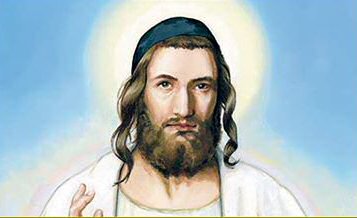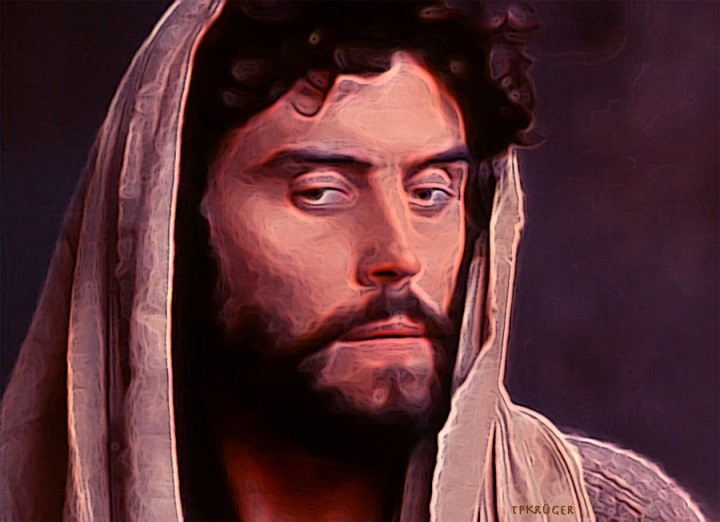
The Mystery of the Passover Wine Revealed:
The Yayin HaMeshumar
By
James Scott Trimm
The Prophet Isaiah writes:
And whereof from of old men have not heard,
nor perceived by the ear, neither has the eye seen
an Elohim beside You, who works for him that
waits for Him.
(Is. 64:3(4))
There is a Baraita on this verse that appears twice in the Talmud once in the Midrash Rabbah and four times in the Zohar.
The following is the Baraita as it appears in the Talmud:
What is the meaning of “Eye has not seen” (Is. 64:3)
Rabbi Joshua ben Levi said:
This is the wine that has been kept
in its grapes from the six days in the beginning.
(b.Berakot 34b; b.Sanhedrin 99a)
The phrase “wine that has been kept” in the Hebrew is Yayin HaMeshumar “wine of keeping”. The tradition of the Yayin HaMeshumar runs deep in traditional Judaism. It is the wine that will be served at the Messianic Feast when the Messiah re-establishes the Kingdom of Israel on earth.
In his first letter to the Corinthians Paul also quotes, or perhaps we should better say paraphrases Is. 64:3(4) as follows:
But as it is written:
The eye has not seen, and the ear has not heard,
and into the heart of a son of man has not entered
that which Eloah had prepared for those who love Him.
(1Cor. 2:9 HRV)
Note that Paul’s citation is influenced by the Baraita as the actual text of Isaiah says that “eye has not seen… an Elohim beside you” but Paul says “Eye has not seen… that which Eloah has prepared for those who love Him.” And the Baraita has “Eye has not seen… the wine which has been kept…”.
Now lets look at Paul’s quote in context:
But we speak the wisdom of Eloah
in a mystery that was hidden
And [that] Eloah had before separated
from before the ages for our glory.
That not one of the authorities of this world knew,
for if they had known it,
they would not have crucified the Adon of glory.
But as it is written:
The eye has not seen, and the ear has not heard,
and into the heart of a son of man has not entered
that which Eloah had prepared for those who love Him.
(1Cor. 2:7-9 HRV)
When we look at Paul’s context we see an even greater influence from the Baraita of the Yayin HaMeshumar “…a mystery that was hidden and that Eloah had before separated from before the ages… eye has not seen… that which Eloah has prepared for those who love Him.”
It is clear that Paul here must be referring to the Yayin HaMeshumar as his audience is, no doubt, familiar with this Baraita to Is. 64:3.
It is the Yayin HaMeshumar that Yeshua refers to when we read:
And afterwards he took the cup, and blessed,
and gave to them, saying,
“Drink you all of it,
for this is my blood of the New Covenant,
which is shed for many to atone for sinners,
And I tell you, hereafter I will not drink of the fruit of the vine,
until that day when I drink it new with you in the kingdom
of my Father which is in heaven.”
(Mt. 26:27-29)
The Yayin HaMeshumar is the blood of the New Covenant. At the Passover Sader the wine represents the blood of the lamb. Note that we read in Revelation that Messiah is the lamb slain “before the foundation of the world.” (Rev. 13:8) his blood is the wine kept in its grapes from the six days in the beginning.
In the Apocryphal Gospel of Thomas Yeshua is quoted as saying:
Yeshua said, “I shall give you what no eye has seen
and what no ear has heard and what no hand has touched
and what has never occurred to the mind of man.
(Gospel of Thomas 17)
Note that in 1Cor. 1:18-20 the same “wisdom” of which we are later told is “…in the mystery that was hidden … before separates from before the ages… which Eloah had prepared for those who love him.” (1Cor. 2:7-9) is also the “wisdom” which “takes away the wisdom of the wise” in 1Cor. 1:19 quoting Isaiah 29:14. In Isaiah 29:15 this wisdom is the contents of the sealed book (Is. 29:11-12, 14, 18). In Revelation this book is opened by the “lamb as if it was slain” (Rev. 5:6) a lamb slain “before the foundation of the world.” (Rev. 13:8).
This is the wine that will be served at the “marriage supper of the lamb” (Rev. 19:7) the great Messianic Banquet and Passover Sader.
In 1Corinthians, Paul has brought up the Yayin HaMeshumar at the beginning of his letter because he will be addressing this wine throughout his letter. In 1Cor. 5 he will discuss the recent Passover Sader at Corinth. In 1Cor. 11:23-34 he addresses the significance of the Passover and especially being worthy to drink the wine which is the Yayin Hameshumar.
In 1Cor. 15:54 he cites Isaiah 25:8 a passage of Isaiah which immediately follows the description of the Messianic Banquet in Isaiah 25:6-7:
6 And in this mountain shall YHWH of hosts make unto all people a
feast of fat things, a feast of wines on the lees, of fat things full
of marrow, of wines on the lees well refined.
7 And he will destroy in this mountain the face of the covering cast
over all people, and the vail that is spread over all nations.
8: He will swallow up death in victory; and the Adonai YHWH will
wipe away tears from off all faces; and the rebuke of his people shall
he take away from off all the earth: for YHWH has spoken it.
Notice that the Yayin HaMeshumar is something which “from of old men have not heard, nor perceived by the ear, neither has the eye seen” (Is. 64:3) elsewhere Isaiah writes:
So shall he sprinkle many nations, kings shall shut their mouths
because of him, for that which had not been told them shall they see
and that which they have not heard shall they perceive.
(Is. 52:15)
Thus the “suffering servant” song of Isaiah 53 is the message that “eye has not seen”, it is the Yayin HaMeshumar.
The Midrash Rabbah to Num. 13:2 (500) says:
Because hr bared his soul unto death (Is. 53:12)
and bruised themselveswith the Torah which is sweeter than honey,
the Holy One, blessed be He, will hereafter give them to drink
of the wine kept in its grapes since the six days in the beginning….
(Midrash Rabbah to Numbers 13:2 (500))
Thus Paul writes:
But we speak the wisdom of Eloah
in a mystery that was hidden
And [that] Eloah had before separated
from before the ages for our glory.
That not one of the authorities of this world knew,
for if they had known it,
they would not have crucified the Adon of glory.
But as it is written:
The eye has not seen, and the ear has not heard,
and into the heart of a son of man has not entered
that which Eloah had prepared for those who love Him.
(1Cor. 2:7-9 HRV)
Not only is the Yayin HaMeshumar the blood of the Messiah, but it is more. It is the “mystery” of which the blood of Messiah is only part:
The Zohar says:
The Tzadik (The Righteous) is the Yesod (foundation) in Yah,
the mystery (SOD) which is the wine which has been kept
in its grapes from the six days in the beginning.
(Zohar; Roeh M’haimna on Pinchas; 3:236a)
There is a clear connection here because SOD (“mystery”) has a gematria (numerical value) of 70 which is also the gematria of YAYIN (“wine”). Just as the Zohar identifies the “mystery” with the Yayin HaMeshumar, so does Paul in 1Corinthians.
For Paul goes on to further identify the Yayin HaMeshumar as follows:
10 But Eloah has revealed [it] to us by his spirit, for the spirit searches into everything, even the deep things of Eloah.
11 For who is the son of man who knows what is in a son of man
except the spirit of the son of man that [is] in him? So also, that
which is in Eloah, no man knows except the Spirit of Eloah.
12 Now we have not received the spirit of the world, but the spirit
that is from Eloah, so that we might know the gifts that were given to
us from Eloah;
13 Which also we speak, not in the teaching of words of the wisdom
of sons of men, but in the teaching of the spirit, and to spiritual men
we compare spiritual things.
14 For the son of man who is in the nefesh does not receive
spiritual things, for they are foolishness to him, and he is not able to
know that which is judged spiritually.
15 Now the spiritual man judges all things, and is not judged from man.
16 For who knows the mind of YHWH that he might instruct him? (Is. 40:13) But we have the mind of the Messiah.
(1Cor. 2:10-16)
Paul identifies the Yayin HaMeshumar with the “words of wisdom” (2:13) as well as the “mind of YHWH” or the “mind of Messiah” (1Cor. 2:16) and with the spiritual “gifts” (1Cor. 2:10-16) which he will elaborate upon later in the letter (1Cor. 12-14).
So next time you partake of the cup of redemption in the Passover sader, realize that this cup is symbolic of the Yayin HeMeshumar, the wine that has been kept from the six days in the beginning, the blood of the lamb slain from the foundation which has been hidden and separated and prepared for those who love him. It is not just the blood of the New Covenant, it is the Mind of YHWH and the spiritual gifts that he has prepared for us.

We need your financial support now more than ever! We must raise at least $200 by the end of the day today to prevent our account from going into the negative tonight.
As you know we have been digging ourselves out of a budget shortfall. As I have said to you many times, I look on this work as a co-operative one with me, and all of you combining our resources together in order to get the job done of helping to teach this great truth to all in the world who will listen. Thank you so much from the bottom of my heart for your continued support, you are the ones who make it all possible by your contributions and your prayers for our work. I truly appreciate your help in every way.
If you can make a one time donation of $500 or $1,000 dollars to support this work.









